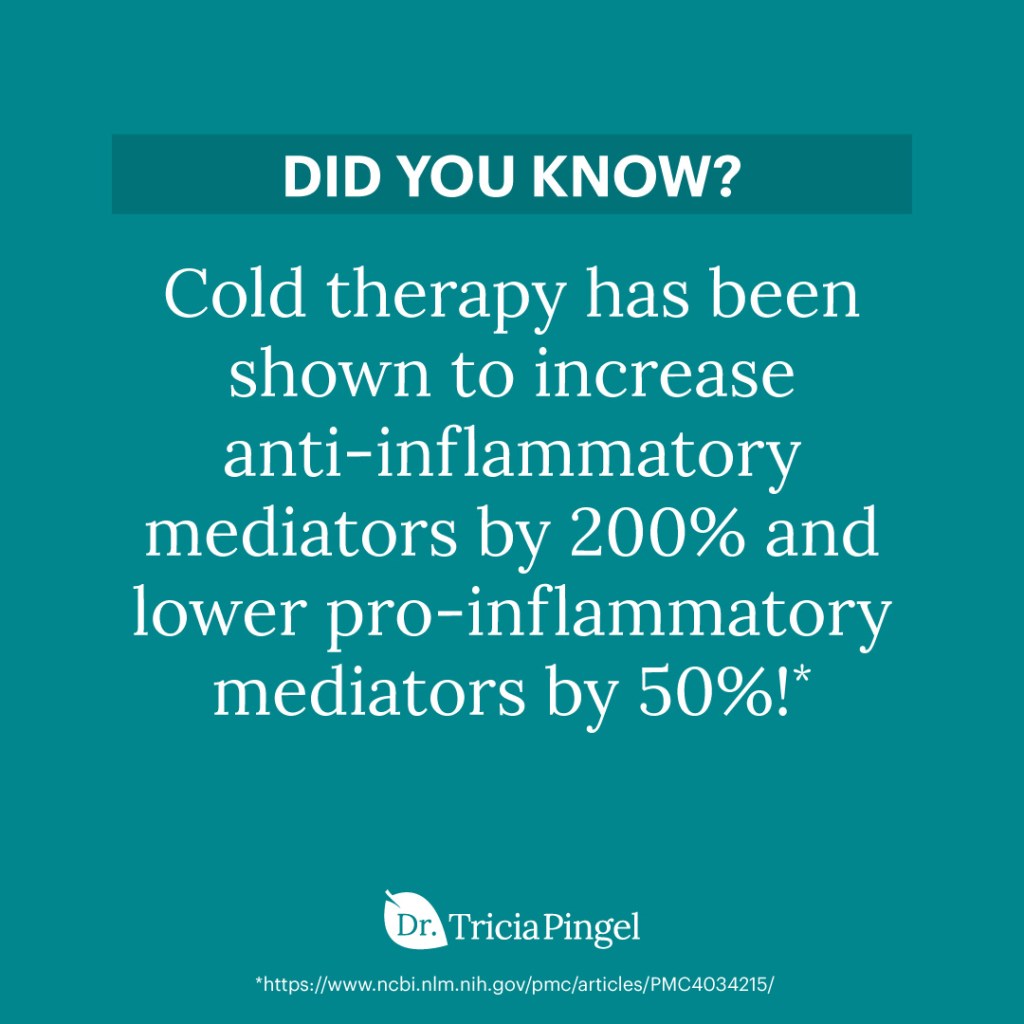Cold Therapy Benefits: Should You Be Using This Effective Technique?
If you’ve ever had a bruise or injury that you soothed with an ice pack, you’ve already tapped into some cold therapy benefits. But did you know that cold therapy offers some pretty incredible benefits beyond just relieving aches and pains?
Believe it or not, cold therapy benefits range from fighting inflammation to reducing your temperature to relieving pain and swelling. Let’s talk about how cold therapy works, learn about all the benefits it offers, and discuss ways to use it.
What is Cold Therapy?
Cold therapy, also known as cryotherapy, is an at-home remedy commonly used to help reduce swelling and relieve pain. It often involves applying either an ice pack or cold wet compress to the skin.
But did you know that cold therapy is also often used after several medical procedures to help reduce swelling, inflammation, and pain? And many studies have confirmed its efficacy.
So, how does it work? Cold therapy benefits your body by causing your blood vessels to contract, which helps to reduce blood flow and nerve activity to the area upon which it’s applied. Basically, when your circulation is reduced, your pain decreases.
Cold therapy is practiced through ice packs, cold wet compresses, cooling sprays, cold baths, and more. There are even cryotherapy clinics around the U.S. that specialize in treating everything from pain to unwanted fat!
The method you choose depends upon your personal needs. For minor injuries, at-home cold therapy is often highly effective, but if you suspect you need more intervention or guidance, speak with your physician about other options available to you.
Let’s take a look at some of the most common cold therapy benefits so you know what to expect when using this therapeutic practice.
3 Useful Cold Therapy Benefits
Here are three commonly useful cold therapy benefits you may want to take advantage of the next time you have a minor injury or ailment.
1. Fights inflammation
One of the major cold therapy benefits is its ability to help fight inflammation. And by reducing inflammation, it helps to relieve pain and discomfort.
So, how effective is it? Well, according to a 2014 study, using cold therapy was shown not only to increase anti-inflammatory mediators by 200 percent but also lower pro-inflammatory mediators by 50 percent! [1]
This means that not only does cold therapy fight inflammation by lowering the inflammation you already have, but it also helps to prevent further inflammation from occurring. How incredible is that?
If you have an injury and suspect that you have some inflammation brewing, apply cold ice packs for 10 to 15 minutes at a time for the first two to three days. This is also a great therapy for more extreme dental work or even postpartum to help reduce discomfort.

2. Aids in reducing high temperature
If you ever had a fever as a child, and I’m guessing you did, you likely remember your parent or caregiver placing a cold wet washcloth on your forehead—and with good reason!
Applying a cold wet compress can help to lower body temperature. [2] This happens because the heat from your body is absorbed by the water and is then vaporized. The removal of the heat helps to reduce body temperature.
I also like to apply cold wet compresses to areas that feel hot to the touch due to injuries. It helps to reduce the heat while also quelling the inflammation. Simply run a cloth under cold water and then apply it to the area of concern until the cloth is no longer cool to the touch
3. Helps relieve pain and swelling
Finally, one of the most well-known cold therapy benefits is its ability to help relieve pain and swelling. By now you understand how cold therapy works to reduce pain and swelling, so let’s discuss how effective it is.
According to one study, using cold therapy after ACL reconstructions significantly reduced pain and discomfort in patients. Researchers divided 28 patients into one of two groups: those using cold therapy and those who didn’t
The outcome? The group using the cold therapy required 53 percent less injectable Demerol (a powerful pain medication) and 67 percent less oral Vistaril (for anxiety) than the group without the therapy.
Additionally, patients in the cold therapy group made the conversion from injectable to oral pain medication, on average, 1.2 days sooner. [3]
Depending on your personal health history and situation, you may be best served by applying an ice pack, using a cold wet compress, or even dipping the affected area into cold ice water, known as cold immersion therapy, for a few minutes—so long as you don’t have an open wound.
Just remember to keep the cold exposure to 15 minutes at a time, tops, so that you don’t damage your skin.
Key Takeaways
- If you’ve ever had a bruise or injury that you soothed with an ice pack, you’ve already tapped into some cold therapy benefits.
- Cold therapy, also known as cryotherapy, is an at-home remedy commonly used to help reduce swelling and relieve pain. It often involves applying either an ice pack or cold wet compress to the skin.
- Cold therapy benefits your body by causing your blood vessels to contract, which helps to reduce blood flow and nerve activity to the area upon which it’s applied. Basically, when your circulation is reduced, your pain decreases.
- Some of the top cold therapy benefits include: fighting inflammation, reducing temperature, and relieving pain and swelling.